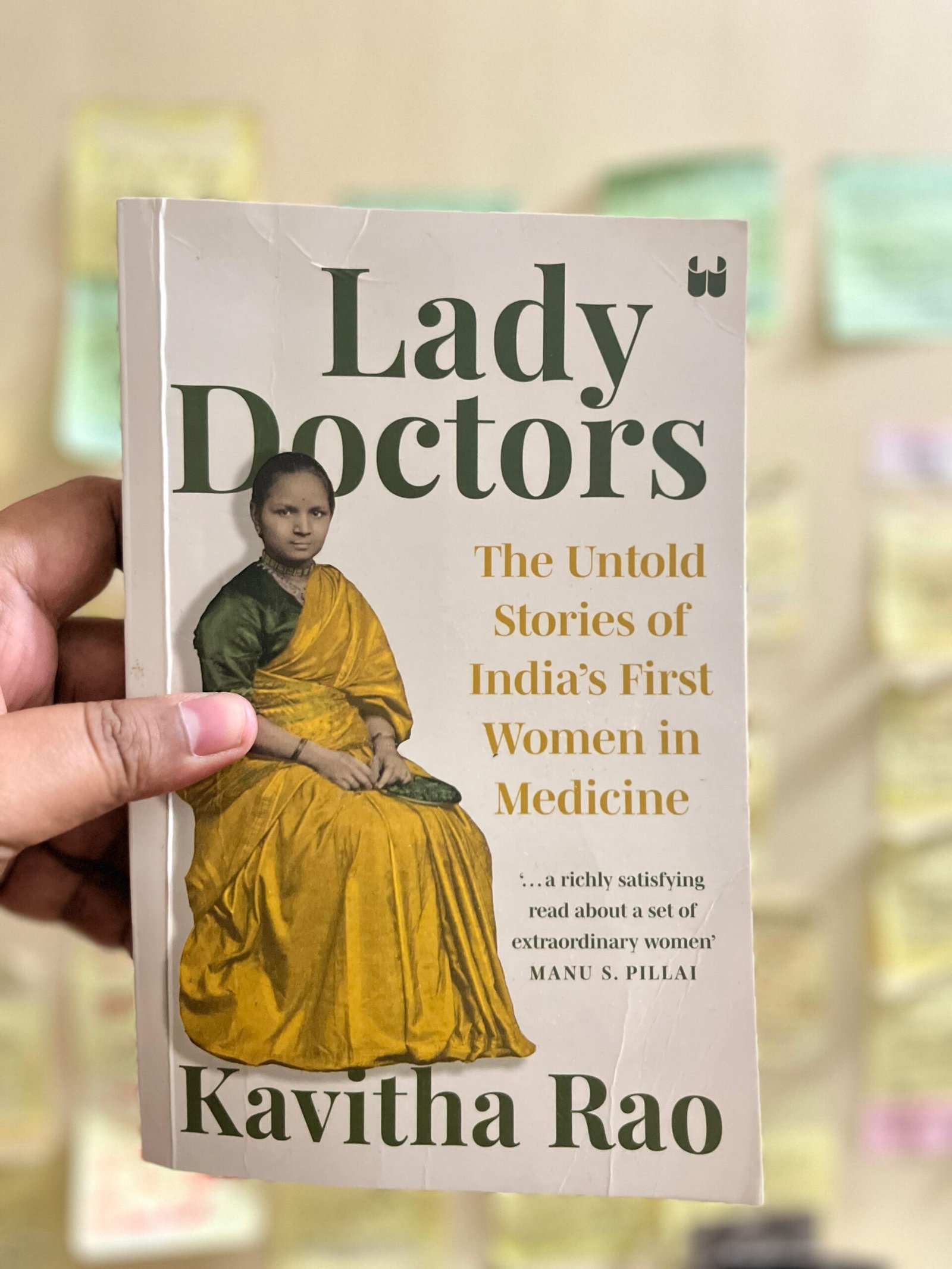In this Lady Doctors review I felt a fire ignite in my veins. Here were women who would not be silenced. Here were women who claimed stethoscopes when society tried to deny them breath. Each page pulses with their defiance. Each chapter demands that we acknowledge their right to heal bodies, minds and nations alike. Medicine was their battlefield. Empathy their emblem. And patriarchy trembled.
Centuries of prohibition could not keep them from the wards. Colonial prejudice could not chain their ambition. Caste barriers broke like fragile glass beneath the weight of their resolve. They were daughters of reformers and dreamers, widows with unbowed spines, scholars who crossed oceans on faith alone. Their footsteps echo still in silent hospitals, in midnight vigils, in every hand that clasps a frightened pulse.
Lady Doctors review: Anandibai Joshi’s Pioneering Journey
Anandibai Joshi was barely seventeen when she boarded the SS City of Rome. Married at nine. Widowed at fourteen. Yet she dared to dream of Philadelphia and of diplomas. In lecture halls where men gawked at her sari she proved that healing knows no gender. Her sore lungs and climate’s cruelty snuffed out her flame at twenty-two. But she left behind a trail of scorched conventions. Her story reshaped colonial India’s medical history and inspired generations of women to pursue women’s medical education in far-flung corners of the empire[^1].
Kadambini Ganguly’s Bengal Renaissance Rebellion
Kadambini arrived in Calcutta as the Bengal Renaissance stirred awake. To sit on a dissecting-room bench in a man’s world was scandalous. Yet she persisted. Enrolled under a borrowed name. Revealed. Condemned. Admired. In 1886 she and Rukhmabai became the first Indian women to earn medical degrees. Later she laughed like church bells through Bhagalpur’s alleys. She delivered babies, treated leprosy, nursed famine victims. She married an ally in her crusade and together they rewrote social codes.
Rukhmabai Raut’s Courtroom Revolution
Rukhmabai’s life unfolded like a courtroom drama. Married at eleven she refused to live with her husband at thirteen. Colonial judges condemned her. The press vilified her. Britain and Bombay debated her fate like grotesque theatre. Undeterred she sailed to London, found sanctuary among cadavers and textbooks, then returned to Mumbai to tend children with clubfoot and measles. In her gentle hands suffering became sacred.
Haimabati Sen’s Compassionate Campaign
Haimabati Sen was married at nine. Widowed at twelve. Destitute and adrift in Calcutta’s tangled lanes she eked out a living as a tutor until an enlightened zamindar financed her medical education. In cholera wards she learned that each life holds a tender story beneath fever’s veil. She hummed lullabies to delirious children and wrapped blankets around exhausted nurses. She carried medicine to villages where superstition reigned and replaced ignorance with dignity.
Muthulakshmi Reddy’s Legislative Crusade
Born into privilege in Madras Presidency, Muthulakshmi Reddy could have chosen ease. Instead she raised a fist. Her father’s estate became a plague hospital. A sister’s death fueled her mission. As the first woman legislator in any Indian council she spoke with righteous fury of mangled bodies and girls forced into illegal abortions. She founded maternity hospitals and rescued abandoned children. Her fearless voice echoing long after her medals shone[^2].
Mary Poonen Lukose’s Kerala Synthesis
Mary Lukose came from a Syrian Christian family in Kerala. She trained in London and returned to head the women’s ward at Government Medical College, Trivandrum. She wove British obstetric protocols with Kerala’s midwifery traditions. Under her guidance maternal deaths plummeted. She founded the All India Women’s Alliance forging bonds across caste and creed, and at independence became Surgeon General of Travancore. Her uniform was armour. Her compassion unstoppable.
Why This Book Is a Must Read
Medical education is a cherished dream for countless young women. But before they don white coats and clutch their stethoscopes, they must know the foremothers who stormed lecture halls and courtrooms alike. These six pioneers did not simply break barriers. They showed us that every victory in the operating theatre echoes across society. Their tales offer lessons in persistence, courage and the unbreakable dignity of the human spirit.
Together they form a mosaic of resistance. They teach that medicine is always political, that every heartbeat beneath a doctor’s fingers casts a vote for equality, and that a scalpel can cut through flesh and through injustice with equal precision. Kavitha Rao’s prose carries the rhythm of monsoon rivers—sometimes terse as raindrops on parched earth, sometimes unfurling like silk banners in the rain. Her descriptions are sumptuous. A mustard-yellow sari drapes a widowed healer. Brass vessels gleam in antiseptic corridors. Ink trembles on letters penned in exile.
Lady Doctors is not merely a history book. It is a feminist manifesto. It is a call to arms for every reader who believes that healing belongs to every body. It insists that we carry forward the work these women began.

